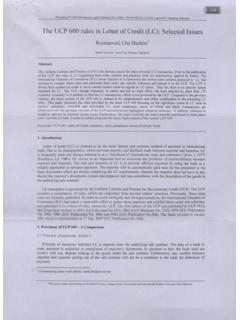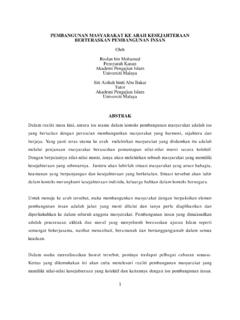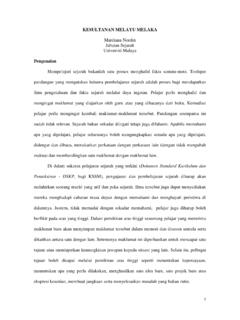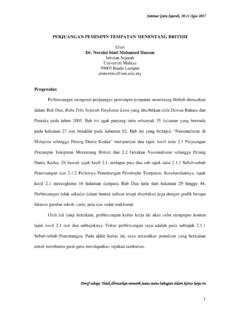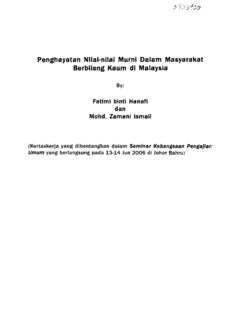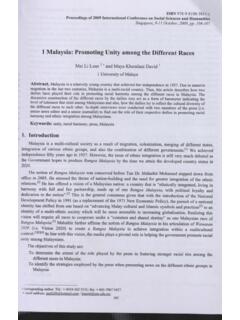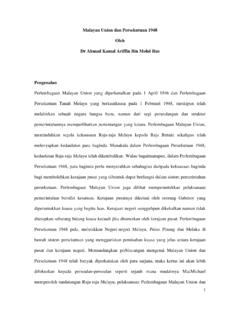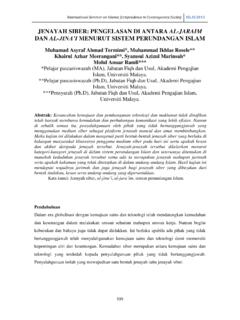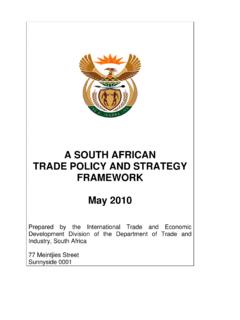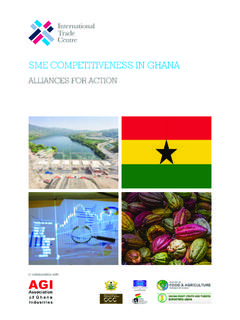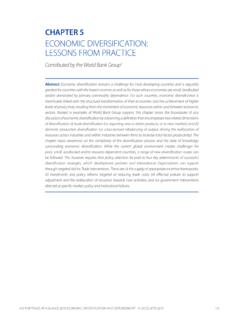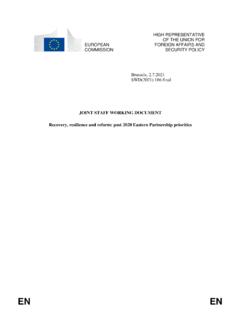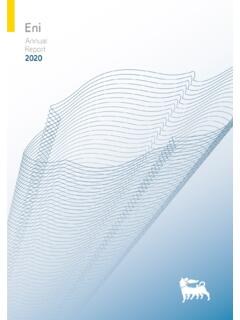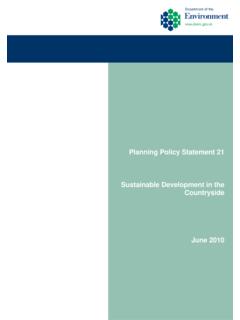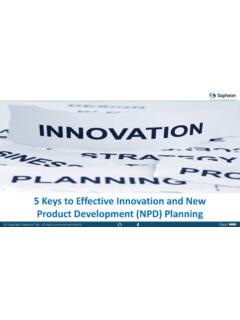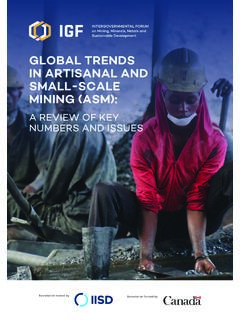Transcription of RENEWABLE ENERGY RESEARCH IN MALAYSIA - UM
1 69 Engineering e-Transaction (ISSN 1823-6379) Vol. 4, No. 2, December 2009, pp 69-72 Online at RENEWABLE ENERGY RESEARCH IN MALAYSIA M. R. Islam, R, Saidur, N. A. Rahim, and K. H. Solangi Centre of RESEARCH UMPEDAC Level 4, Engineering Tower, Faculty of Engineering University of Malaya, 50603 Kuala Lumpur, MALAYSIA Email: ABSTRACT MALAYSIA is one of the most developing ASEAN countries, with a GDP of US$14,700 per capita (PPP basis), and steady GDP growth of in 2008. MALAYSIA is in the midst of an era of vigorous industrial growth brought about by strong domestic demand together with its significant science and technology development. To cope with the economical and industrial growth , the demand of ENERGY is growing very rapidly.
2 In this paper the ENERGY related policies of MALAYSIA have been discussed. The present status of RENEWABLE ENERGY in MALAYSIA has been also discussed in the paper as well. It has been found that among all the RENEWABLE ENERGY sources, solar ENERGY is the most prospective one in MALAYSIA . Keywords: RENEWABLE , MALAYSIA , Wind, Solar 1. INTRODUCTION According to the estimation of international ENERGY Agency, 53% global ENERGY consumption will be increased by 2030, with 70% of the growth in demand coming from developing countries (Oh et al., 2010). MALAYSIA is one of the most developing countries among ASEAN countries next to Singapore, with GDP of US$15,400 per capita (PPP basis), and steady GDP growth of in 2009 (IMF, 2010).
3 Malaysian economy grew at 5% in 2005 and overall ENERGY demand is expected to increase at an average rate of 6% per annum (Saidur et al., 2009). In parallel with MALAYSIA s rapid economic development, final ENERGY consumption grew at rate of from 2000 to 2005 and reached Mtoe in 2005. The final ENERGY consumption is expected to reach Mtoe in 2030, nearly three times the 2002 level. The industrial sector will have the highest growth rate of percent. Industrial sector accounted for some 48% of total ENERGY use in 2007 which represents the highest percentage. It is estimated that the natural gas reserve is expected to last for around 70 years, while oil is expected to be depleted in 16 years at current rate of usage (Shigeoka, 2010).
4 The crucial challenge facing the power sector in MALAYSIA is the issue of sustainability that is to ensure the security and reliability of ENERGY supply and the diversification of the various ENERGY resources. The question of security and reliability of supply is critical, to ensure smooth implementation of development projects to spur economic growth in MALAYSIA while diversification of ENERGY resources is critical to ensure that the country is not dependent only on a single source of ENERGY . In MALAYSIA , green technology application is seen as one of the sensible solutions which are being adopted by many countries around the world to address the issues of ENERGY and environment simultaneously.
5 In MALAYSIA , there seems to be renewed impetus in promoting the growth of an indigenous green economy. Not only does the country face the threat of climate change and pollution but the Government also has to find new sources of growth and move up the value chain (Leo, 1996; Oh et al., 2010). Therefore, in this paper the numerous ENERGY policies which have been adopted so far and the RENEWABLE ENERGY development in MALAYSIA have been discussed as well. ENERGY POLICIES IN MALAYSIA MALAYSIA s ENERGY sources primarily comprise oil, natural gas, hydro power and coal, although RENEWABLE ENERGY (RE) sources such as solar power and biomass are currently being exploited (Poh and Kong, 2002).
6 For the past 60 years, Malaysian government has formulated quite a number of ENERGY -related policies to ensure sustainability and security of ENERGY supply. But over the last three decades, pragmatic ENERGY 70 policies have facilitated a more environment-friendly ENERGY development path. The national ENERGY Policy, the more significant policy was actually introduced in 1979 with three primary objectives; supply, utilization and environmental. The fuel diversification policy in MALAYSIA is reviewed from time to time to ensure that the country is not over dependent on main ENERGY source. The policy was further revised in 1999 with the announcement of the Five-Fuel diversification Strategy.
7 RENEWABLE ENERGY (RE) was made the fifth fuel in the ENERGY supply mix in the Eighth Malaysian Plan with the target to contribute 5% of the country s electricity demand by year 2005. In order to meet this goal, the Small RENEWABLE ENERGY Program (SREP) was launched in May 2001 under the initiative of the Special Committee on RENEWABLE ENERGY (SCORE) aimed to support the government s strategy in intensifying the development utilization of RE as the fifth fuel resource in power generation. The development pace of RE in MALAYSIA is rather slow and still at its nascent stage, with its current contribution at around 1% only of the total ENERGY mix, even though the fifth fuel policy had been announced a decade ago (Oh et al.)
8 , 2010; Saidur et al., 2010). In the 9th Malaysian Plan (2006-2010), the emphasis on ENERGY efficiency is intensified to address the nation s ENERGY challenge in line with the sustainable development agenda. The establishment of the Ministry of ENERGY , Green Technology and Water to replace the Ministry of ENERGY , Communications and Multimedia earlier in 2009 reflects MALAYSIA s seriousness in driving the message that clean and green is the way forward towards creating an economy that is based on sustainable solutions. The launch of the new National Green Technology Policy in April 2009 by the current Prime Minister, Datuk Seri Najib Tun Razak, that follows shall provide guidance and create new opportunities for businesses and industries to bring a positive impact to the economic growth .
9 The objectives of the National Green Technology Policy are as follows (GT, 2010): To minimize growth of ENERGY consumption while enhancing economic development; To facilitate the growth of the Green Technology industry and enhance its contribution to the national economy; To increase national capability and capacity for innovation in Green Technology development and enhance MALAYSIA s competitiveness in Green Technology in the global arena; To ensure sustainable development and conserve the environment for future generations; and To enhance public education and awareness on Green Technology and encourage its widespread use.
10 While fossil fuels are expected to remain the dominant source of ENERGY for decades to come, RE such as wind, solar, biomass, biofuel and geothermal heat are expected to double between now to year 2030, although their share in the ENERGY mix is most likely still be around of the total ENERGY demand by 2030 (Najib, 2009). The ENERGY related policies which are contrived so far are given below: Establishment of Petroliam Nasional Berhad (PETRONAS) 1974 National Petrolium Policy (1975) National ENERGY Policy (1979) National depletion Policy (1980) Four-Fuel/ diversification Policy (1981) Fuel Mix in electricity Generation, 1995-2005 RENEWABLE ENERGY as the Fifth Fuel Policy (2000) ENERGY efficiency (EE) Eighth MALAYSIA Plan, 2001-2005 Incentives for the ENERGY sector Ninth MALAYSIA Plan, 2006-2010 RENEWABLE ENERGY (RE) Rapid depletion of fossil fuel reserves as well as climate change has driven the world towards RE sources which are abundant, untapped, and environmentally friendly.

